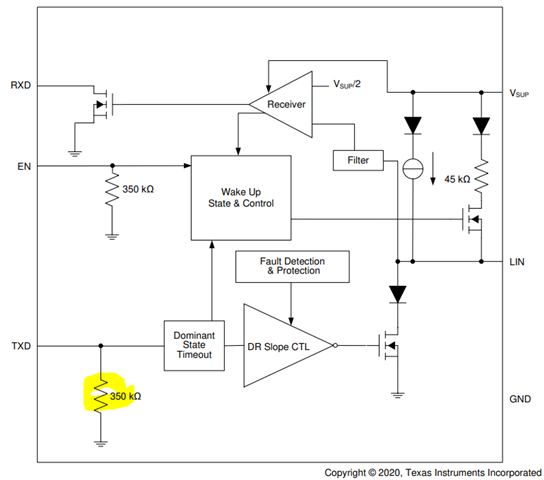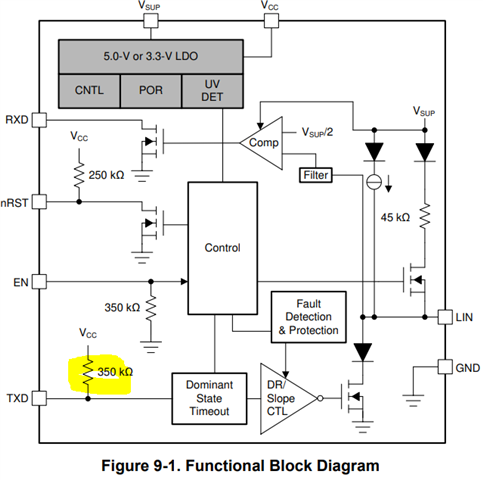Other Parts Discussed in Thread: TLIN1028-Q1
Hi team,
This is urgent question so could you give me your response soon? Question No.3 is highest priority.
1. The TLIN1039-Q1 has internal pull down.

And In the customer schematic EN is always pulled high. (not controlled by MCU)
Therefore when the MCU is under the initialization and the output port becomes HiZ state, the LIN pin drives the LIN bus to dominant accidentally.
I think this situation should be avoided. What usage does TI assume for the proper operation?
I think this situation can be avoided by controlling EN pin...right? If not please could you let me know the detail?
2. TLIN1039-Q1 has the internal pull down resistor at the TXD pin, but TLIN1028-Q1 has the internal pull up resistor at the TXD pin unlike TLIN1039-Q1(+ other TI LIN portfolio).

What is the reason/background that TLIN1028-Q1 has pull up and TLIN1039-Q1(+ other TI LIN portfolio) has pull down at TXD?
3. My customer would like to keep the EN pin high (= don't want to control EN pin by MCU) if possible.
If the external pull up resistor is added on the TXD line, are there any issue or concern?
If this is no issue what resistor range is appropriate? 1-10kOhm?
Any advice is welcomed.
I appreciate your support.
Regards,
Hirata

